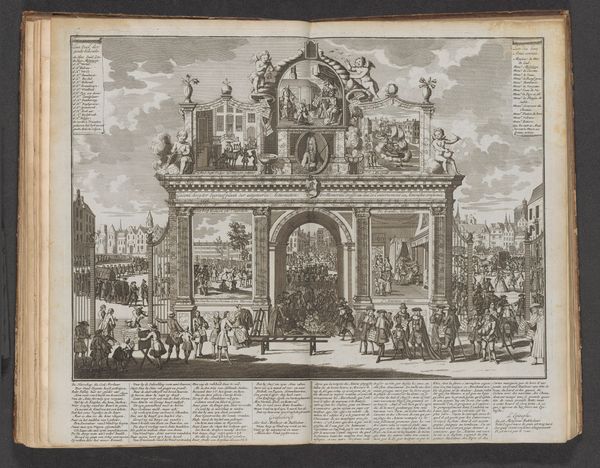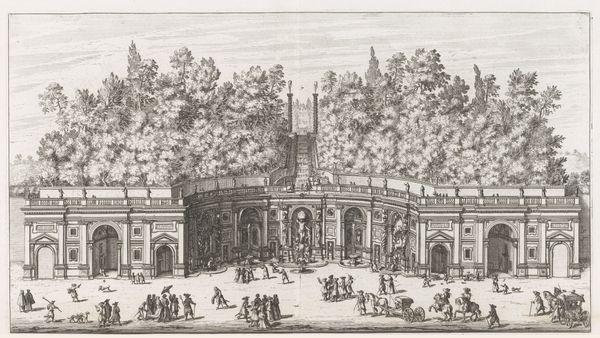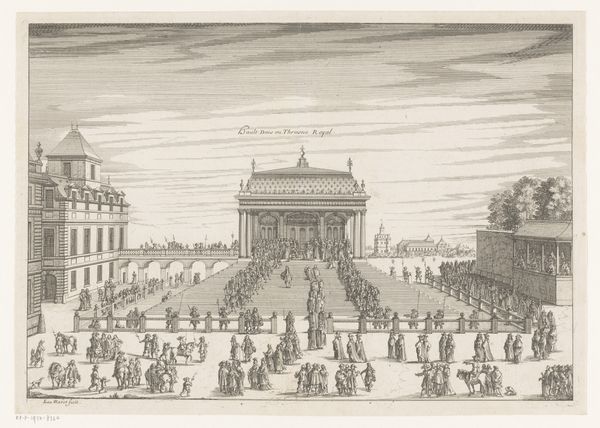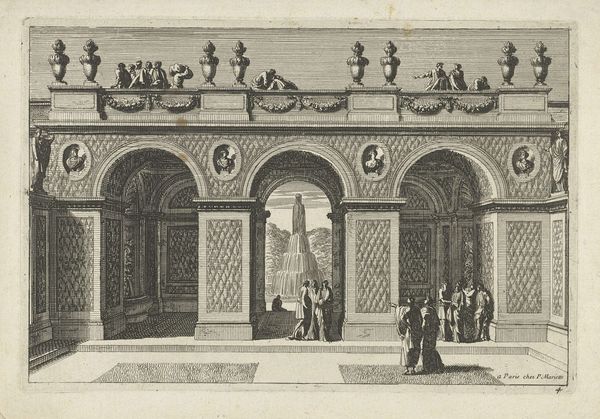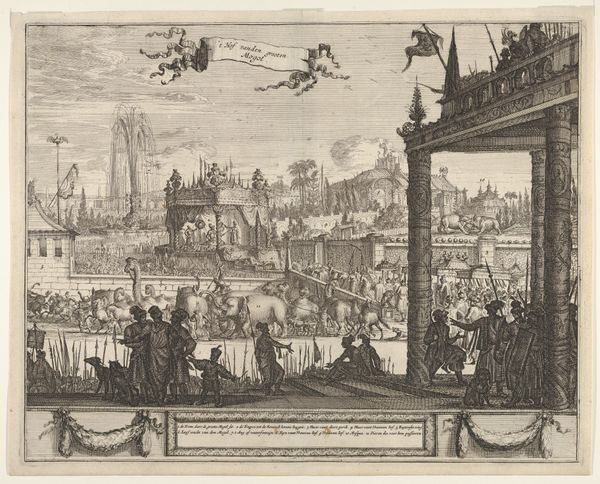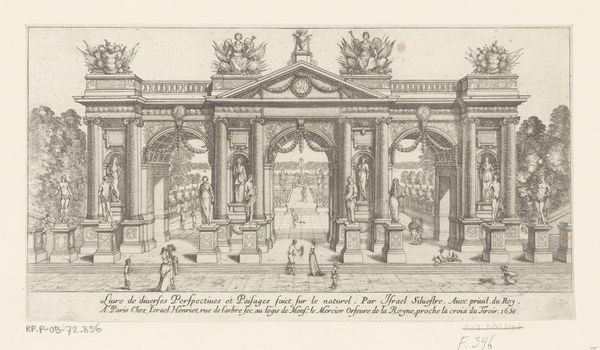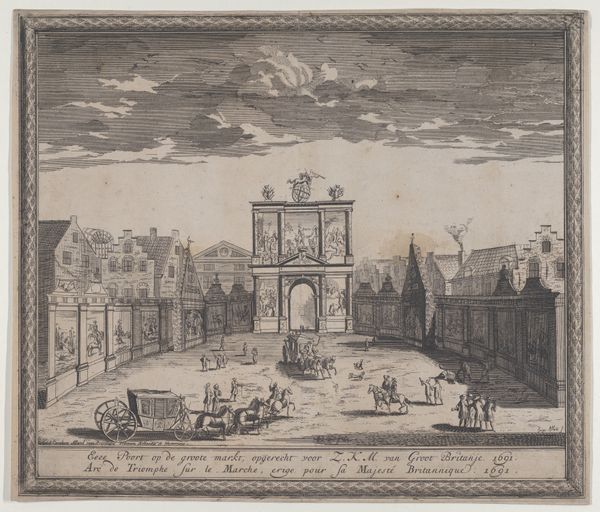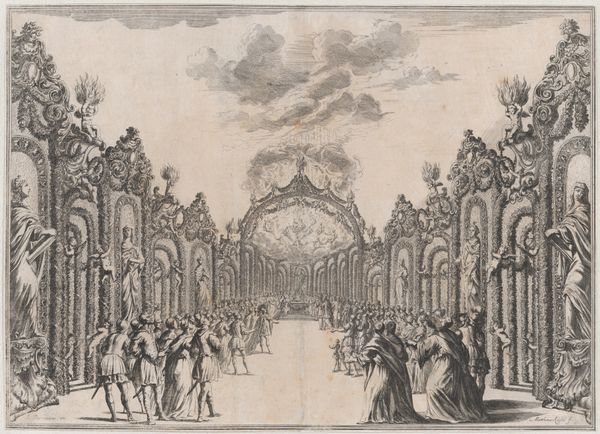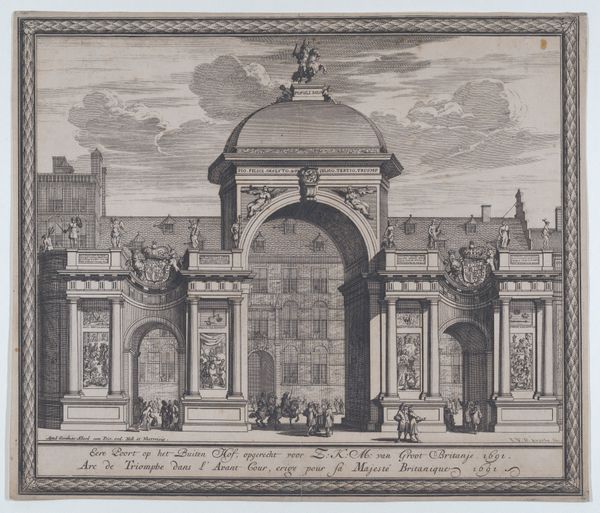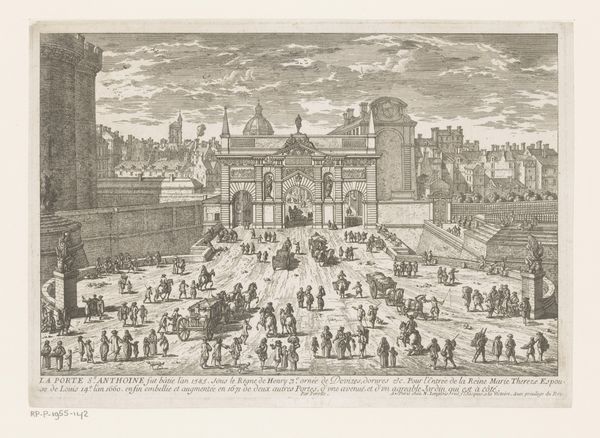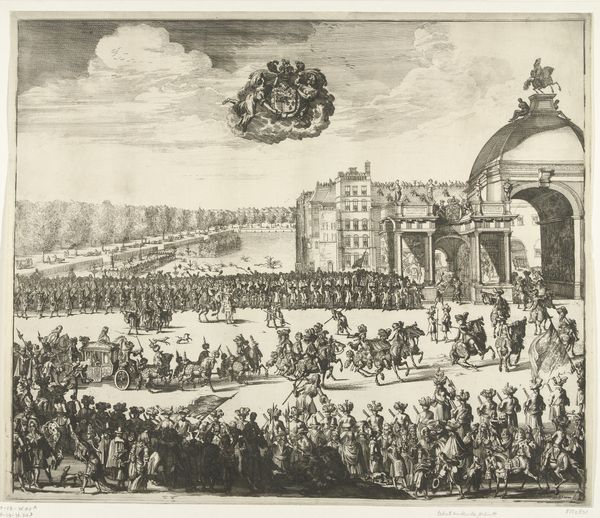
The altar of the holy sacrament; at left, the sacrament beneath a canopy, carried in procession and followed by the Louis XIV and Anne of Austria heading towards a large arched structure, spectators at left and right kneel in front of tapestries after Raphael 1643 - 1653
0:00
0:00
drawing, print, etching
#
drawing
#
baroque
# print
#
etching
#
cityscape
#
history-painting
Dimensions: Sheet: 13 3/8 × 18 15/16 in. (33.9 × 48.1 cm)
Copyright: Public Domain
Curator: Here we have an etching by Stefano della Bella, created sometime between 1643 and 1653, titled "The Altar of the Holy Sacrament." The scene depicts a grand religious procession with Louis XIV and Anne of Austria. Editor: My first impression is the stark contrast between the rigid formality of the architecture and the supplication of the figures in the foreground. There’s a real sense of scale conveyed through the artist’s rendering of the crowd. You can almost feel the rough texture of the etching. Curator: Della Bella was a master of capturing the grandeur of Baroque court life. What's particularly fascinating here is how the etching medium itself became a tool of propaganda, disseminating images of royal power and piety across Europe. Notice how the tapestries featuring Raphael's artwork act to legitimize the lineage of sacred art traditions being displayed by the Royal Family. Editor: Absolutely, and let's not forget the labor involved. Consider the artisans who meticulously crafted the tapestries, whose craft is memorialized within this etching itself. Their skill and materials—the very stuff of their lives—is part of what we're witnessing. What kind of ink would have been used to create these? How were they transported and circulated in their own historical context? Curator: A pertinent observation! I believe the distribution of these etchings played a key role in shaping the public's perception of the French monarchy. These detailed visual records offer invaluable insights into the era’s social, political, and religious landscape, from artistic choices made for religious propaganda to those reinforcing court power. The strategic deployment of imagery and symbolism within the frame highlights the authority of both the church and the state. Editor: Indeed. This work feels very indicative of how art at the time often masked displays of consumption and domination through supposed acts of reverence, masking, in other words, the very material conditions of its production. Curator: Looking closer has helped reveal to me how the careful choreography in such art worked in conjunction with various socio-cultural institutions, constructing and promoting its messages to further the dominance of the monarchy and solidify faith at a volatile political time. Editor: Agreed; looking closely, in this context, reminds me that images are both aesthetic objects and material objects forged through social realities and labor.
Comments
No comments
Be the first to comment and join the conversation on the ultimate creative platform.
